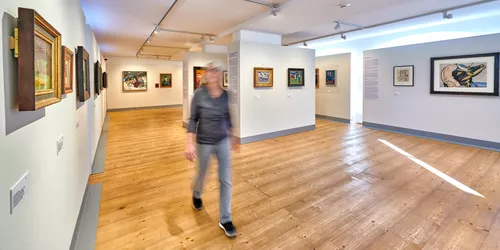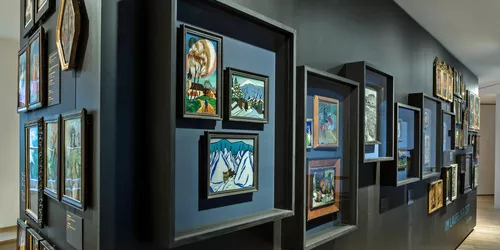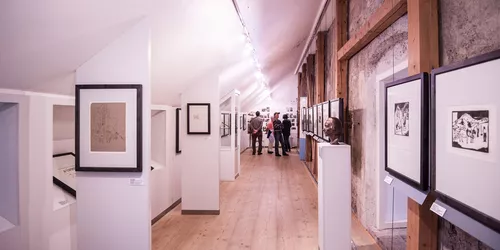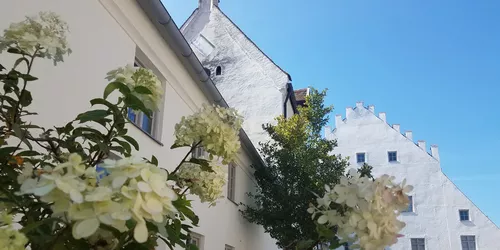Murnau Castle Museum: art, history and the Blue Land
With its extensive collection of paintings, the Murnau Castle Museum shows how Murnau and its surroundings made a lasting impression on world-famous artists such as Wassily Kandinsky and Gabriele Münter.
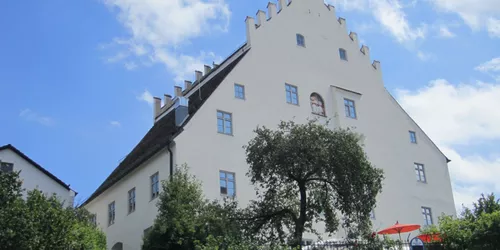
For over 100 years, the landscape around Murnau, a municipality south of Munich, has inspired popular artists - particularly from the fields of post-impressionism, expressionism and modern and abstract art - to create world-famous masterpieces. Today, visitors can view some of these paintings in the "Murnau Castle Museum". The exhibition focuses on the work of Gabriele Münter, who is regarded as an icon of Expressionism. More than 80 of her paintings, drawings, reverse glass paintings and prints are on display here.
Murnau's influence on renowned artists
However, it was not only Gabriele Münter who was captivated by the community on Lake Staffelsee. Inspired by the landscape, the light and the people, numerous artists found new forms of expression in painting in Murnau. This included the Russian artist and world-famous expressionist Wassily Kandinsky, with whom Münter moved into a house in the small Upper Bavarian town in 1909.
The history of the "Blue Rider" and the "Blue Land"
Two years later, together with Franz Marc, one of the most important German Expressionist painters, Münter founded the artists' association "Der Blaue Reiter", named after a painting by Kandinsky. This is also the reason why the area around Murnau is still nicknamed "The Blue Land" today. In addition to Franz Marc, who often travelled by train to the small town in the Bavarian Alps, Alexej Jawlensky, a Russian-German expressionist and also a member of the "Blue Rider", was also a regular visitor. For example, he captured the sunset over Murnau in his work "Yellow Sound".
Additional exhibitions at the Murnau Castle Museum
In addition to the outstanding works of the "Blue Rider", the exhibition is complemented by paintings by the late Romantic Carl Spitzweg, landscape painter Eduard Schleich and the humorous poet and draughtsman Wilhelm Busch.
The Münter House: a journey into the past
Tip: The Münter House is just 800 metres from the palace museum. This is where the two greats of Expressionism - Gabriele Münter and Wassily Kandinsky - lived together until 1914. Gabriele Münter even lived and worked here until the end of her life, before finding her final resting place in the tranquil Murnau cemetery. Today, the house is a memorial site with authentic original furnishings including furniture painted by the two artists.
How to get from the castle museum to the Münter House
To get to the Münter House from the Palace Museum, simply turn right along Schloßbergstraße in a westerly direction until Untermarktstraße crosses your path. Turn left here and at the next opportunity turn right again onto Schlossergasse. After 100 metres, this becomes "Burggraben". Follow this until you reach the junction with Bundesstraße 2, where it changes its name to "Kottmüllerallee". Continue straight ahead until you finally reach your destination after 250 metres.
Current information, admission prices and opening times can be found here.
Culinary recommendation in Murnau
How about a hearty meal before you head back home? Wassily Kandinski and Gabriele Münter dined at the Griesbräu inn in Murnau. Here you can round off the day perfectly with hearty Bavarian specialities in a rustic atmosphere.
How to get to the Murnau Castle Museum
It is a 16-minute walk from Murnau railway station to the museum. The route from the station is signposted. Walk out of the station building towards the roundabout and cross it. Follow Seehauser Straße until you reach Kellerstraße. After 65 metres, turn into Bahnhofsstraße. Follow this road until you see Postgasse on the left. Turn off here again and follow the road for 130 metres. Then turn right onto Untermarkt. After 90 metres, Schloßbergstraße branches off to the left. After 200 metres, turn left onto Schloßhof.
Arrival
Schloßhof 2-5
82418 Murnau am Staffelsee
Murnau
Our tip: Please make sure to check your train connection and the expected capacity before you start your journey.
